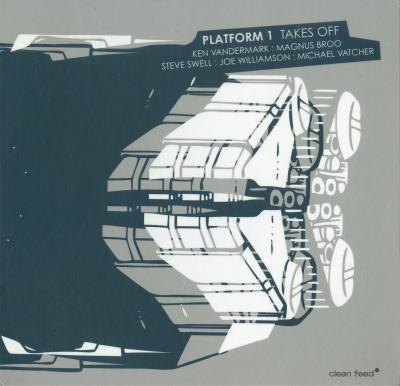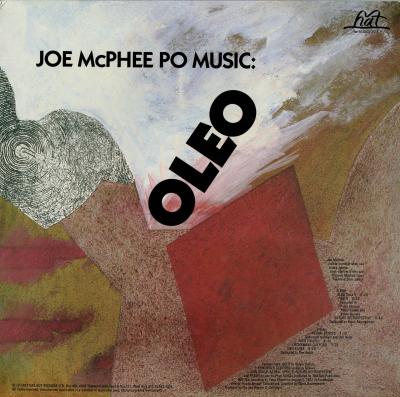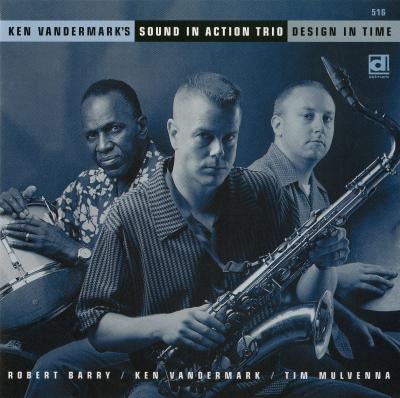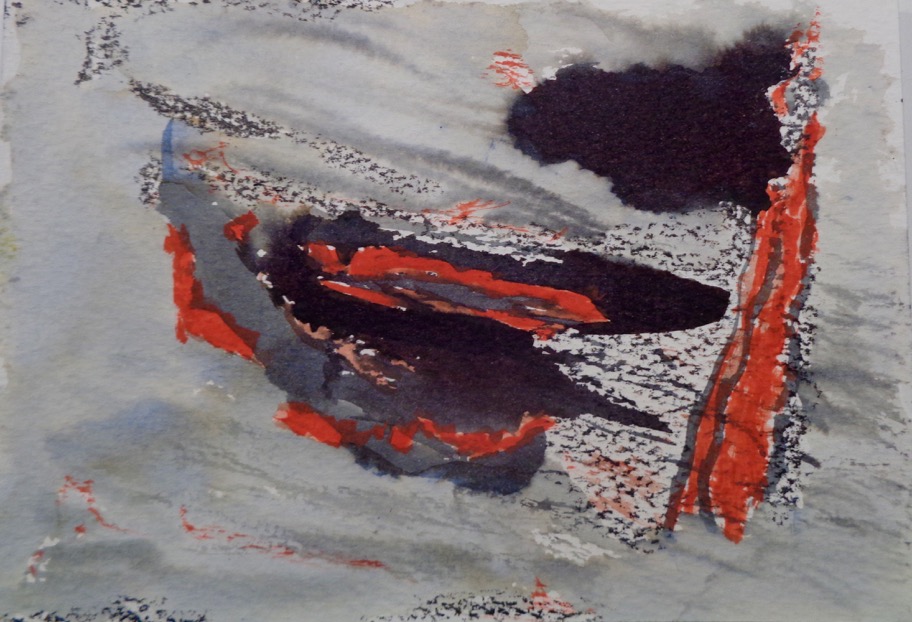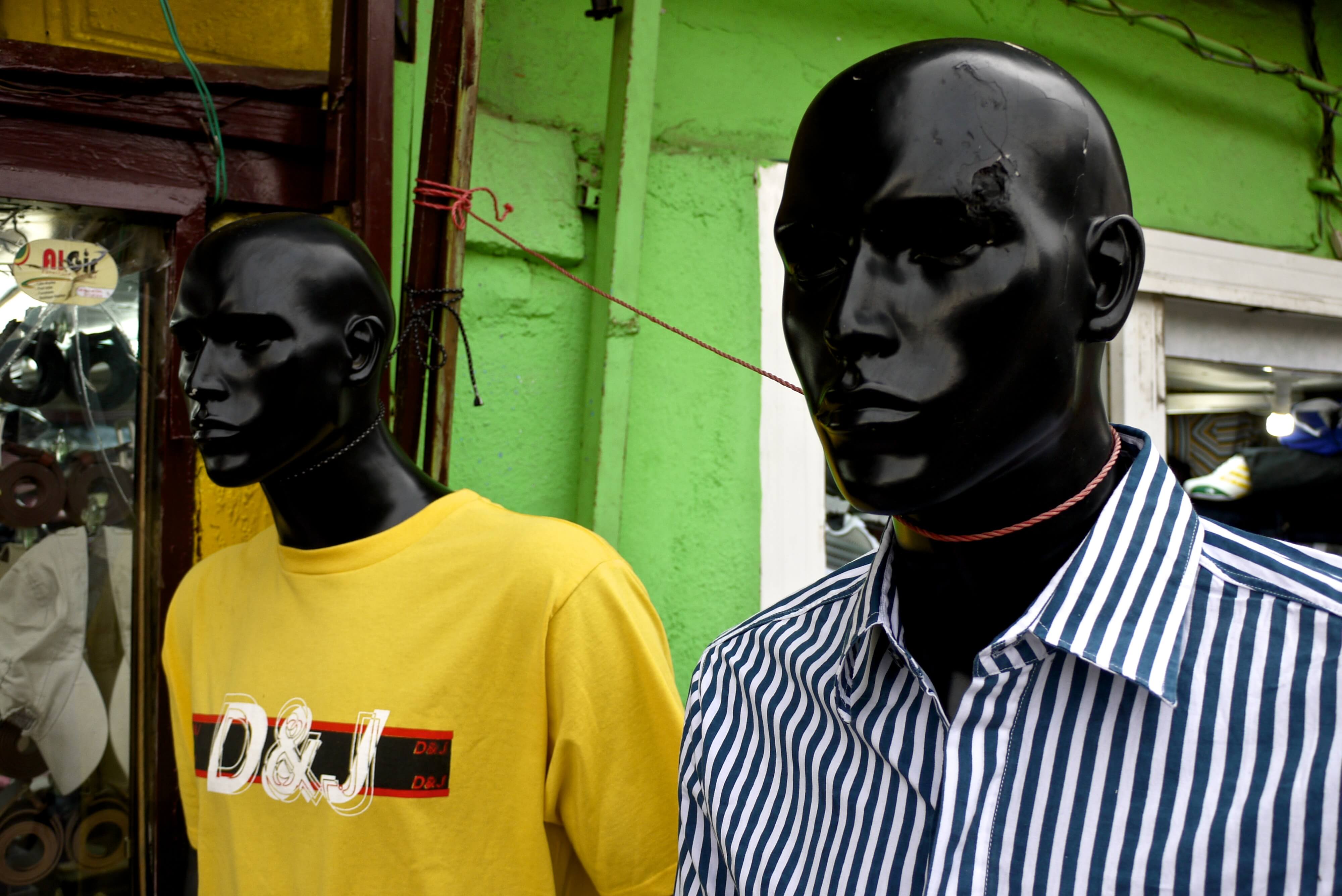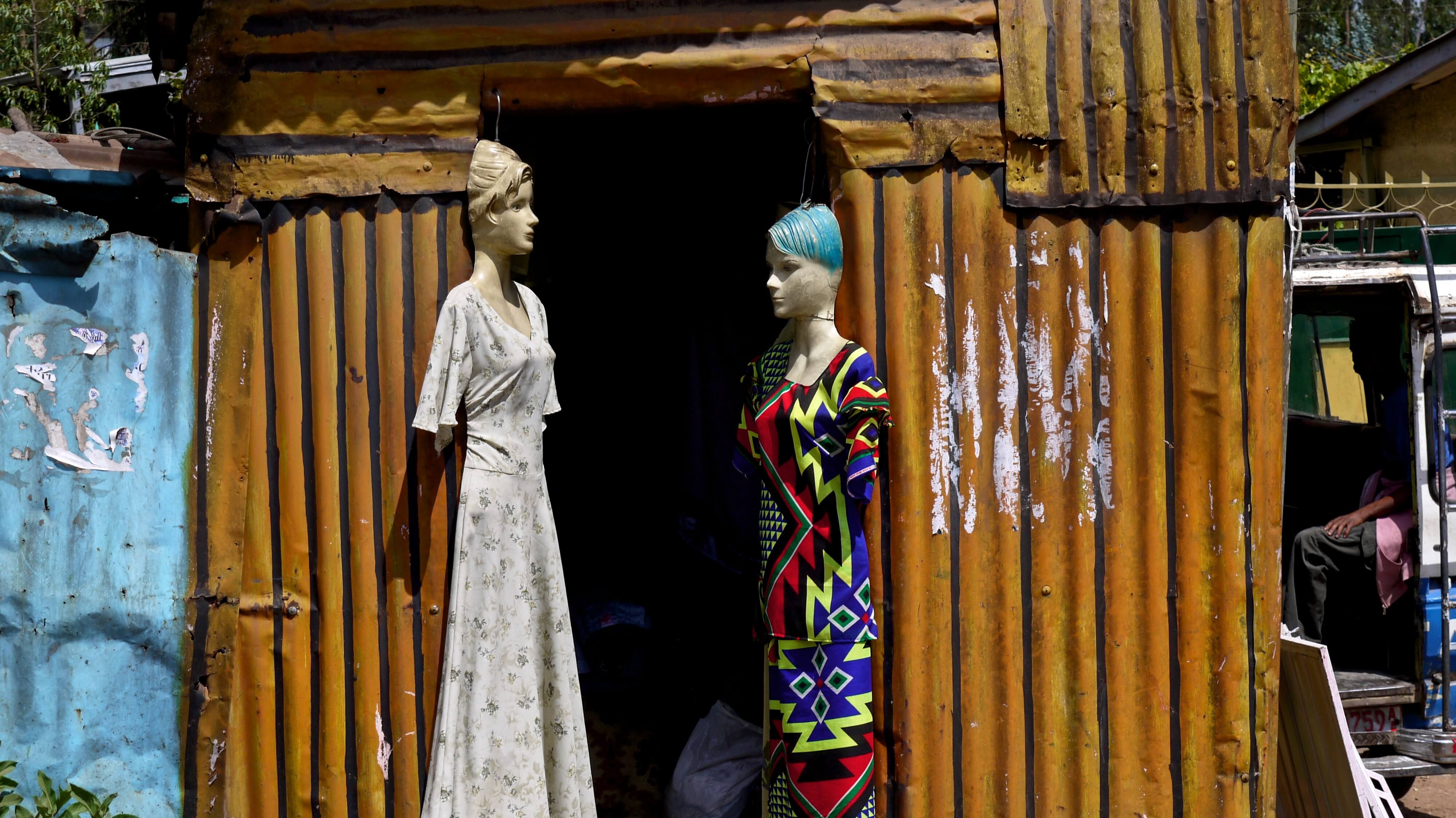Ken Vandermark
Catalytic Sound, DIY, and the Challenge of 21st Century Sustainability
Catalytic Sound is most likely understood as an online record store by most music fans, but this is only part of the story. It began as a strategy to put its members in more control of the dissemination and sale of their available discographies, providing a single place to direct their fans to locate the range of their recordings. Now Catalytic Sound also helps as a distributor for the DIY record labels of the individuals in the collective. In both cases, the purpose has been to help the musicians to generate more income through their recorded work.
The continuing goal of the cooperative has been to always increase availability of materials and add resources- for both for the musicians and their listeners- by exploring different developments in contemporary improvised and experimental music by those who make it. This means finding different ways to create sustainability: 1. with the innovation of economic strategies that support the artists in the rapidly shifting economic circumstances that affect all musicians at this point in time. 2. developing more awareness of the artistry involved by expressing other parts of the creative psyche, both in terms of the work and what inspires it. Catalytic Sound will work to generate methods of economic sustainability through DIY strategies. And Catalytic Quarterly is going to share aspects of inspiration that help the musicians continue their activity from a creative standpoint. In regards to survival, making music- as with all art- is a both/and, not either/or, equation.
As I will indicate, a major factor causing this change in the financial situation for musicians in the 21st century is the loss of income from record sales at shows, but the problem also includes record sales in general. These issues were the essential reason behind the formation of Catalytic Sound, it's a collective established to try to organize a better way to generate income for its members. To help do so, organizing, consolidating, and centralizing the available discography for the musicians, for fans of the music, and for the labels involved, only made sense. It's important to note that all of the record labels that co-op with are independent, whether run by one of the members or not. In every case, these labels have supported improvised and experimental music for many, many years.
When I first started touring extensively in the mid 1990s, sales of records at a show in the United States would often equal the performance fees for the same concert. This was essential to make touring viable. Those record sales helped cover the cost of transportation (the van and gas) and accommodations (doubling up in motels), and it left most if not all of the fees to pay the musician. I toured in the U.S. twice during January/February of this year, once with Hassles (w/Terrie Hessels, Paal Nilssen-Love, and Jon Rune Strøm) and once with Marker (w/Andrew Clinkman, Steve Marquette, Macie Stewart, and Phil Sudderberg). The total income from fees and record sales for Marker's tour of six shows in the Southeast came to $4146. The total costs- which include a van with a good rental price, gas, traveling with our own backline, getting home-stays at half of the shows and doubling up in inexpensive motel rooms on the others, and paying the Billions booking agency their 10% of the performance fees- came to $2517. The total net income after a week of work for five musicians was $1629. I paid the other members $400 each and took whatever was left, seeing it as an investment in the future of this project, one that is very important for me.
The decision on paying Andrew, Steve, Macie, and Phil $400 each was not arbitrary. It was also the net amount the musicians in Hassles made after a January tour of seven shows in the Northeast and Midwest, where the expense situation was almost identical; even with tour support from the Norwegian Arts Council. So, after more than two decades of touring and working with some of the best and most respected musicians playing today, the musicians I'm collaborating with are currently clearing $400 for a week of concerts in the United States (bear in mind that this is not a "weekly wage" that takes throughout the year; it's an average of only $62 per person per concert, payment that is supposed to cover all the accumulated effort involved- musical and otherwise- to make each performance possible). In 1998 the musicians cleared more than double that. Some might consider that a drop of more than 50% in tour income is a sign that there has been a decrease in the interest for improvised and experimental music across the current cultural landscape, but I could make a lot of arguments for why I know that that's not the case (one example, from personal experience, is that through hard work it's feasible to tour now as much as ever in both the United States and Europe). The fact is, the decrease in funds from revenues based on record sales has affected ALL musicians.
Rapper Nipsey Hussle posted the following information on his Instagram account in January (which was backed up by verifiable articles in Pigeons & Planes, On Smash, Hot New Hip Hop, and Up Roxx) indicating the cold reality of how streaming music "works" as a source of income for artists:
ATTENTION EVERYONE:
1 Million Streams on YouTube = $690
1 Million Streams on Spotify = $4,370
1 Million Streams on Apple Music = $7,350
1 Million Streams on Tidal = $12,500
1 Million Streams on Amazon Music = $4,020
Don’t shoot the messenger.
Jus Sign up 4 Tidal
— THA GREAT (@NipseyHussle) January 15, 2018
These figures were generated by ONE MILLION streams. And they are not net income figures, they do not include the costs of production- performing, recording, mixing, and mastering- for the material that was streamed. Based on studio expenses for most popular music, the total income generated from having a track streamed one million times on the platforms above would not even come close to covering the basic costs of creating and recording the music involved.
Ther are other hard facts connected to streaming. In the case of Spotify, the most popular platform which controls more than 50% if the marketshare [more info from The Trichordist, January 15, 2018], an article in Billboard from June 15th, 2017 indicated that the company reported losses of more than 581 million dollars that year, but also stated that their revenues rose to 3 billion dollars (complete article in Billboard, June 15, 2017). Yet, despite the losses declared in their accounting, Spotify deemed it reasonable to move their offices from Midtown Manhattan to the World Trade Center that same year, a building where the asking rents "have risen into the $80s per square foot, among the highest office rates in Lower Manhattan" (Crain's New York Business, July 5th, 2017). In the same article, which was published just weeks after the report in Billboard regarding Spotify's "losses," Crain's indicated that not only was Spotify going to move into the World Trade Center, it had "elected to take all of the remaining office space in 4 World Trade Center, adding roughly 100,000 square feet to the 378,000 square foot lease it signed at the tower earlier this year," for a total of 14 floors in the building while continuing to "retain its 100,00 square foot office at 620 Sixth Ave. in Midtown." [full article, Crain's New York Business]
In addition, "according to its financial statements, Spotify continues to get more generous in paying wages and other benefits, including stock-based payments, to its employees as time goes by. Last year, the cost per employee grew to an average of 172,000 euros ($180,000) per employee annually, versus the 164,000 Euros ($171,000) on average it paid to employees in 2015. And that's up from the 133,000 euros ($139,000) in averages wages and benefits paid to employees in 2014. Within that, the average annual salary in 2016 was 107,000 euros ($112,000), up from 103,000 euros ($108,000) ; and 84,000 euros ($88,000) paid in 2014." [Billboard, June, 15, 2017] Even so, Spotify paid the musicians whose work was used to generate this income 9% less than in 2016 than in 2015, for a cumulative reduction of 24% since 2014 (The Trichordist, January 15, 2018).
Ken Vandermark88DO88888D888O88O888OOOO8O8OO8O88O8ZOOOOOOOZOZOZZOOOZOOOOOZOZ92300 88DO88888D888O88O888OOOO8O8OO8O88O8ZOOOOOOOZOZOZZOOOZOOOOOZOZOOOOOO8OOOOO8OOO8O8 8888OOO8OO88O88O88OOOOOOOOOOOOOOOOOOOOOOZZ8ZOZOOOOOOOZOOOOOOOOOZOOOOOOOO8OOOOOOO 8888O8888OOOO8O8O8OOO8O8OOOOOOOOOOOOOOOOOOOOZOOZZOOOOOZOOZZOOOOOOOOOOOOOOO8O8OOO 8888OO88OO888OOOOOO8OO8OOOOOOOOOODMMMMNMMDNMNO8OOZOZZOZOOOZOOZOOOOOOOOOOOOOOOO8O 888888OO888DOOOOOOOOO88O8OOOODNMMNNNMMNDNNNNNNND888OZZOOOZZZOOOOOOOOOOOOOZOOOOOO 8D888888OO8O8O8O8OO88OOODOOMMMMMMNNDNDNMNN8DN8DMDOOMOOZZO$ZZOZZOOZOOOOOOOZOOOOOZ O8O8O8OOO8OOO8OOO8OOOOO8O8NMMMMMMMMMMNNNMNN8MNM8ND888D$ZOZZZOZOZOOOOOOZOO8O8OOOO 88OO88O8888OOOO88OOOOOO8MMMMMMMMMMMMMMMMMNDNNNNDNDD88$8OOZOOOZOZOZOZOZOOOOZOOOOO 8O88O888OOO8OO8O8OOO8O8MMMMMMMMMMMMMMNNNNNDDDDNZNN8DDZD8DNZOOOZZZOZOOOOOOOOOOOOO 8888888OO8888O8OOOOOO8MMMMMMMNMMMMMMMMND8NDD8DO8$OZ8NOOOONM8OOZZOOOZOZZOOZZOOOOO O8O888OOOOOO8OZO8OOOOOMMMMMMNNNMNNNNNDNNDOZDOZ8ZO8O88OD8DNMNOOZZOZOZOZOOOOOOZZOO 8O8O88O8O8OOOOO8OOOOOMMMMMNNNDD88ZOZZZZ$$O$777I7?I?+??7$ONMMOOOOOZZOOOOOOZOZOOOO 8OO88OOOOOOOOOOO8OOONNMMMNNNDD88O$7I7III??++=~~=======++?ONNMDOZZZOZZOOOOZOOOZOZ 888O8O88O8OOOOOOOZOOMMMMMMNND88OO$7II??+====~~~~~~~~~~==+INNDDOOZZZZZZOZZOOZOOZO O8OOOOO8OOOO8OOO8OO8MMMMMMDD888OZ$II???+=~==~~:~::::~~===+NND8OZOOZZZZZOOOZZOOZO 888O88OOOOOO8OO8OOZDMMMNNNDD8888Z$$I??+=====~~~~~~::~~~==+NNDD8ZZOOZZZZOOOOOOOOZ 88O88O8OOO8OZOOOOOONMMNDMNDD8O88O$$II?++====~~~~~::~:~~==+$DZ88ZOZZZZZZOOOZOOOOO 888D888OO8OOOOOO88ZMMMNNNNDD888O8O7$I?+=======~~~:~~~~~===ZIOZZOZZZZOZOOOOZOZOZO 8D8O8888OO88OOOOOOOMMMMMNDD88O8ZOO7$?I=?+==~=~~==:~~~~~===I7ZOOZOOZZZ8ZZOZZZZOOO DDD888888OOOOOOOOOODMMNMMD8DO8O$Z$$I?++??+===~~~~~::~~~~===7O$$ZZZZZZOZ8ZOZZZOOZ 88888888O8O8OO88O8ZDNMMMNDDD88Z$$7II??++~I=~+~=~~~~~~:~~===OZ$OZZZZZZZZ8ZOZ8ZZOZ 8O888888888O8OO8OOO8MNMNDDDD8OOZZOOZ7?+++I~~==~~:~:::~~~==$ZI7Z$ZZZZZZZOOZZZOZZO D8888888888OOO8OOONNDNMNDDDDD8Z7ZO8D88ZIO$==+??II++=?===~=ZZ8ZZZZZ$ZZZZZZZZOOZOO DD8D8DD88O8O88D8OON8NMDDDDDD88ZIZO7I8NND8$~~?7$$?++~~~~=~=7ZZZZZZ$ZZZ$ZOZZZZOZZZ 8D8D888D88888O88ZONNDNNDDDDD8DDZNN+I88MN8?~~+IIO8MOD7~~~~~?$$+ZZOZZZZZZZZOO8ZOOO D8D8D888O8888O8OOODN8NNDDDDDN887I7=I?ON88I=~:=+?7I7==+?~~~=OZ7ZZZZZZZZZZZZZZOZOO DD8DD8888888OOOOOOONDNNDD888O8D$?I??IND8OI+~==+?==~~:::~~~=II=Z$ZZ$ZZZZZZOZZZZZO DD888DD88888OOOOOOONDNNND8OZ$$77II7ZOD88OI=~~~:+~~::::::~~=~+$Z$ZOZZ$OZZZOZZOZZZ DDD8D88888888O8OOOO8NDDDD8O$$II7I$Z8DDD87+=~=~:~~=~:::::~~+~7$ZZZZZZOZZZZZZOOZZO D8DD88D888O8OO88O8OO8DDD8DOZ$$7I$$ODDD887+=~~~:~~:~~:::::=~~$$$ZZZOZZOOZZOOZOZOO DD8D8DD888888O8OOOZO8NDDDD8ZZ$Z$$ZDNND888I?==~~~~~~:::::~~=~$ZZZZZZZZZZZZ8ZZOZZO DDDDDD888D888ZOOOOOOO8DDDDDOOZZZZONNM88M8O??N+~=~~:~::~:~~+$$$$ZZZZZZZOZZOOZOZZZ D8D888D888D888O88OOOODDDDD88OZ$Z$$ONMNNNO$?+==~+=~~~::~~~~=$$Z$Z$ZZZZZZZZOZZOZZO 8DDDDD888DDO8OOO8OOOODDDDD8DOO$$?IOD7DOZ$?7?I7+===~~:~~~~==Z$Z$ZZZZZZOZZZOO$ZZZO DDDDD8DD888O888OOOOOOODDDDD8OZ$7$ODNDDOO7Z8??Z7+=~~~:~~~~=+NNN8ZZZZ$ZZZZZZZOZOOZ DDDDDDD88D8888OO88O8MMMND8D8DO$8D8DZ8ZD$I$D$7$I7==~:~::~~=INMNNNNDOZZOZZZZZZZOOO NDDD8D888D888O888DMMMMMMDDDD88O88$$O8Z$$7+++~==?=++~::~~=+MNMNNMMNNNNDZZZZZZZZZZ DDN8NDDDDDD8888MMMMMMMMMDD8DDOZI77O8NOOO$8I?7I?++I==::=~=+NMMNNMMMNNNNNNNNOOOOOZ NNNNDNDDDNDDNMMMMMMMMMMMNNDDD8$I7$Z88Z77?++==::~~~~==~~~+DNMMMMMMMMNMMNNNNNMNNN8 NNNNNNDNDMMMMMMMMMMMMMMMMDDDDDO7ZZZZOOO7OI$II+=~~~~~~==+?NNNMMMNMNMMMMNNNMMNNMMM NNNNNNMMMMMMMMMMMMMMMMMMMNNDDD8OZZ$ZZZ8OOO7++~~~~~~~===I$DNNMMMMMMMMMMMMMMMMNMNN MMMMMMMMMMMMMMMMMMMMMMMMMMDDDDD888Z$7I$$?=?+~:~:~=~===?87NNNMMMMNMMMMMMMMNNMNNNN NMMMMMMMMMMMMMMMMMMMMMMMMMNDDDDNNDOOZOZ7?==::=~~=~?=+=DDZNNDMMMMMNMMMMMMMMMMNNNN MMMMMMMMMMMMMMMMMMMMMMMMMMNDNDDDNNN88OO$??I++=+==+I$=NOZONDDNMMMMNNMMMMMMMMMNDNN MMMMMMMMMMMMMMMMMMMMMMMMMMMNDDDDDDNNNZDO$ZII7?7III+=DM7O~NNNNMMMMNNMMMMMMMMMNDNM MMMMMMMMMMMMMMMMMMMMMMMMMMMMNDNNDDDDNNNDD88ONZD??+=OMDNZONNNNMMMMNNMNMMMMMMMNNDM MMMMMMMMMMMMMMMMMMMMMMMMMMMMMNNDDDDDDDDDND8OZI+=~+ZNM8OONDDDNNMMMMMNNMMMMMMMNDNM MMMMMMMMMMMMMMMMMMMMMMMMMMMMMMNNDDDDNDDDZZO7???=?ONMMD$ONDNNNNMMMMNNMMMMMMMMNNNM MMMMMMMMMMMMMMMMMMMMMMMMMMMMMMMNDDDDD88Z?+?II??$DMMMMDMNNNDNDNMMMMNNNMNMMMMMNNNM MMMMMMMMMMMMMMMMMMMMMMMMMDMMMMMNNND8DD8Z+??7?$ODNMMMNDN8NDNDDMNMMMMNMNMNMMMMMNMM MMMMMMMMMMMMMMMMMMMMMMMMMDDMMMNNDNNDDDD87ZZIZ8DNMMMMIMNNNNDNDNMMMMMMNMNMMMMMNNMM MMMMMMMMMMMMMMMMMMMMMMMMMMMOMMNDD8888O88ZO8O8DMNMMMMZDDMDDNNDNMNMMMMNNNMMMMMMNMM MMMNMMMMMMMMMMMNNMNMMMMNMMMZODMND8OZ$ZZZO8DDNNNMMMMMNNMMDDNNNNMNMMMMMNMMMMMMNNNM MNNMMMMMMMMMMMNNMNNMMMMMMMMMZZ7NNDOZ$$ZZ88DNNNMMMMMNMNNDDDDMDNMNNMMMNNNMMMMMNNNM MNNNMMMMMMMDMNNNNNNNMMMMMMMMO$ZZNDDOZZ$ZODNNNNMNMMMZMMDDN8NMDDMMNMMMMNMMMMMMNNNM MMMNNMMMMMNNMNNNNNNNMMMMMMMMM7$$8O8DOOZO8DNNMMMMMMMZMMMDDNMNDDMNNMMMMNNMNMNMMNNN MMMMMMMMMNNNNNNNNNNNNMMMMMMMMZ7Z$ZZZ8OOZODDNNNMMMMMOMMMMMNDDDMMMZNMMMMNNMNMMMNNM MMMMMMMMMNNNNNNNNMNNNMMMMMMMM$O7ZOOZZOOO8NNMMMMMMMNNMMMNMDNNMMMMNNMMNMMMNNNMNNNN MMMMMMMMMNNNNNMNMNNNNDNMMMMMMM7Z77IO8O888DMMNNMMMMMMMMMMMMDMMMMOMNMMNMMMMMMNMMNM MMMMMMMMMMMNMMNNNMNMDNNMMMMMMMM8$+ZZ+OO8DNMMMMMMMMNMMNNMMMMMMMMMMMDMNNMMMNNNNNMN MMMMMMMMMMNMNMNNNMNMDNNMMMMMMMMMMO$$ZOZ8DNNNMMMNMNDNMNDNMMMMMMZMMNNNNNMMMMNMMMNN MMMMMMMMMMMMMMMMMMDMNNNNNMMMMMMMMMMZOZ8D8DMMMMNNMM8NNNNNMMMMMMMMMMNDNNMMMMMNNNMD MMMMMMMMMMMNNMNMMMMNMNNNNNMMMNMMMMMMMMO$$8NMMMMMNMONMNNNMMMMMNNMMMNNNMMMMMMNNNNN MMMNMMMMMMNNNMNNMMMMNNNNNNMMMNDMMMMMMMMMMZDNMMMMMN8NMMNMMMMMMDNMMMNNNMMMMMMMNNNN MMMNNMMMMNNNNNNNMMMM,NMNNNNMMM8OMMMMMMMMMMMMNMMMMZZNMMNMMMMMMNNMMMMNNNMMMMMMMNNN MMMMNMMMMNNNNMNNNMMMMNMNNNMMMMNODMNMMNNMMMMMMMMMM7$NMMMMMMMM?NNMMMMMNDMMMMMMMNNN MMMMNMMMMMNNNNNNMMMMMMNNNNNMMMMDZNMNNNMNMMMMMMMMMOOMMMMMMMMMNNNMMMMMNNNMMMMMMMNN
MORE from Ken Vandermark:
Ken Vandermark Talk - Arts & Entertainment Industry Forum


The truth is, though Spotify is willing to pay for expensive offices in Manhattan and give tens of thousands of dollars in raises to its staff, they do not come close to compensating the artists fairly for using their work as content for their streaming platform. Yet they pay themselves with the funds generated from that work through the revenues gained from 70 million subscribers (90% of Spotify's revenues have come from subscriptions over the last three years, ad sales only account for 10% of the companies gross income; more information at Music Business Worldwide, August 2, 2017). Most music fans who use this platform probably do not realize the economic reality involved for the musicians, and believe they are using a good service that pays the artists fairly. If they shifted back to artist run platforms, that paid the musicians with proper compensation for their recordings, it would completely alter the current economic paradigm for everyone.
I need to go to Europe to tour in order to survive as a musician, and I am fortunate enough to be able to do so, but the expense of reaching the concerts I'm playing on that continent has completely changed since I started performing there on a regular basis in the mid 1990s. Travel is now costing the bands I work with, on average, 50% of the fees. Due to cuts in arts funding that are occurring in almost every country, distances have become further and further apart between economically viable shows. It's now almost always necessary for the bands to fly or take a high speed train to get to the gigs. Growing costs for traveling, often for hundreds of more kilometers per show and for more hours per day, has cut the income of most improvising musicians in half when they've toured in Europe during the last decade. The increase in travel distances also takes a physical toll on the performers that needs to be calculated.
The economic reality I'm describing is something all musicians are contending with in the 21st century. Many aspects of it are not going to change. Pandora's Box is wide open on the internet. There are certainly some positive developments connected to these circumstances. The exchange of information and ability to listen to and see music from throughout the its recorded history is truly important and remarkable. But for musicians to continue to create new work, they are going to have to have the time and resources to do so- whether that music is improvised and experimental, or if it's populist in nature. If every musician's time is taken up with one or more day jobs to pay their bills, there is going to be less and less opportunity and energy to devote to creating music- whatever kind.
Which brings me back to the long term goals of Catalytic Sound, and to the idea behind Catalytic Quarterly. Yes, Catalytic is a online record store, but it's a business where- after purchasing the albums at wholesale from the independent labels we collaborate with - 50% of the income from every sale goes directly to the musicians, and the other 50% goes to covering costs and developing new projects at the co-op, such as this periodical.
(The basic math works like this:
for a $20 LP issued by a non-member label, $10 goes to the label, $5 goes to the musician, $5 goes to Catalytic;
for a $20 LP issued on a label run by one of the Catalytic members, $10 goes to the artist and $10 goes to Catalytic [in both cases, minus any shipping costs to get the merch to the office in Chicago]).
The fact is, if you love music and the musicians, buying their records- instead of streaming them or downloading copies for free; if on LP, CD, or digital download; whether from Catalytic Sound or not- will create necessary income for the artists to help them make new music in the studio and on the road. If you are excited by what you hear on the recordings, go see the music live, where it really takes place.Your presence at the shows will increase the income for the musicians performing for "the door," and in the case of concerts that provide guaranteed fees, your attendance has the potential to create opportunities for more shows by more artists. Being in the audience helps convince presenters that they should continue to take chances programming more of the music you want to hear. By learning more about the musicians involved by reading Catalytic Quarterly, about their inspirations and influences, I hope you'll have even more respect and passion for what they do.
This is a 21st century rallying cry for music, and what it comes down to is this- if the musicians are going to continue to create work and if the listeners want to help that happen, the best solution is to Do It Yourself, together.
-Ken Vandermark, Novate Milanese, Italy, March 4, 2018
